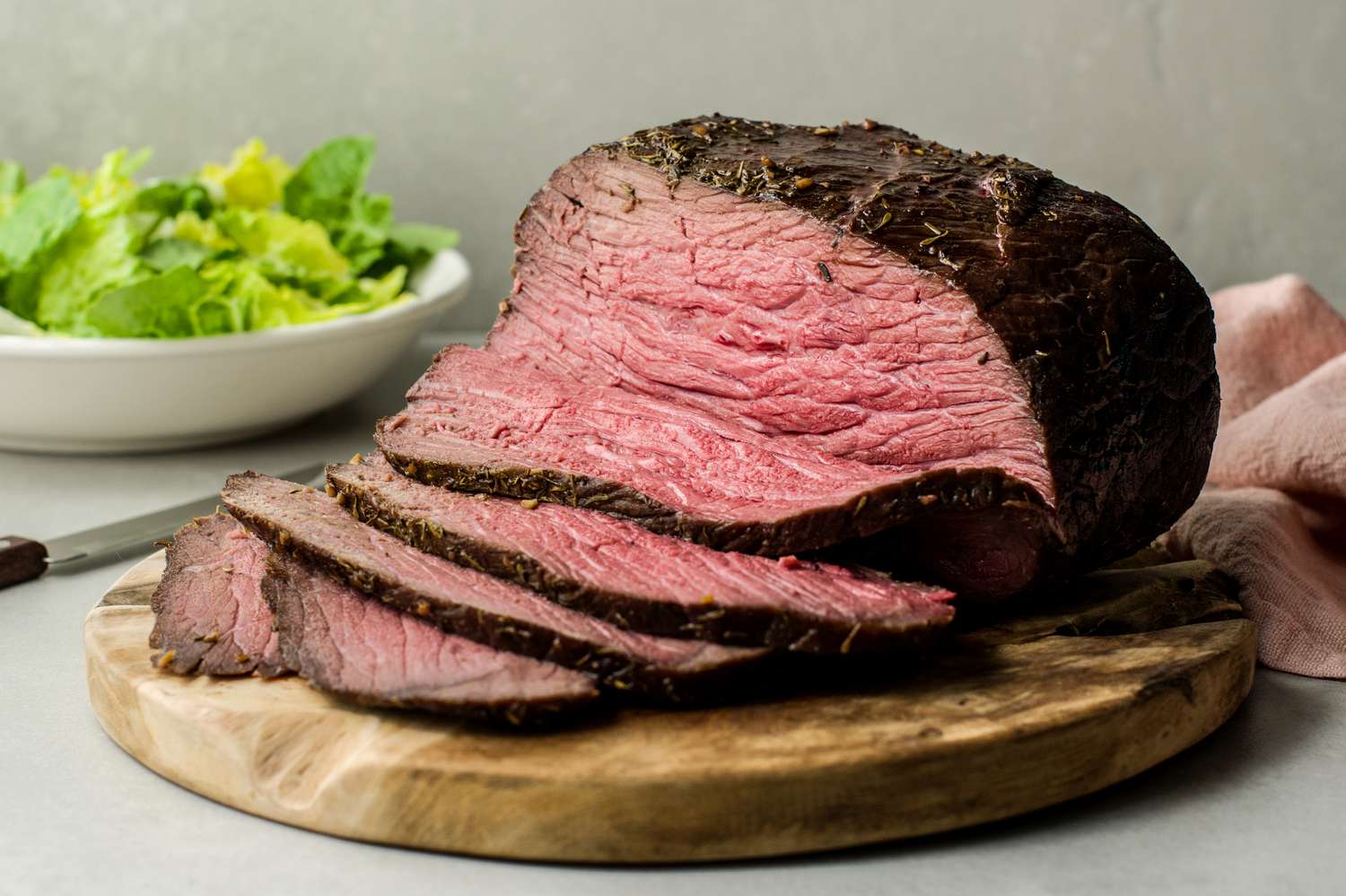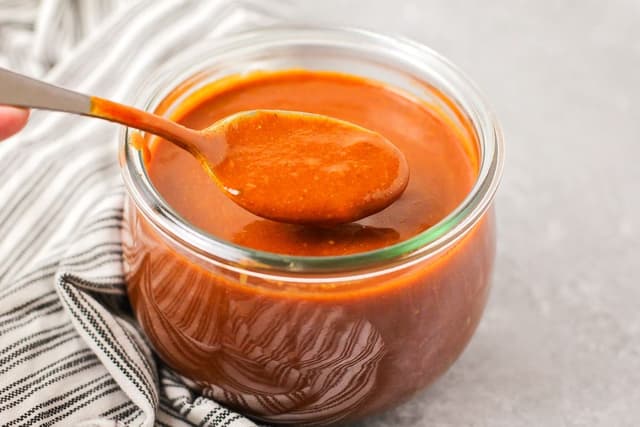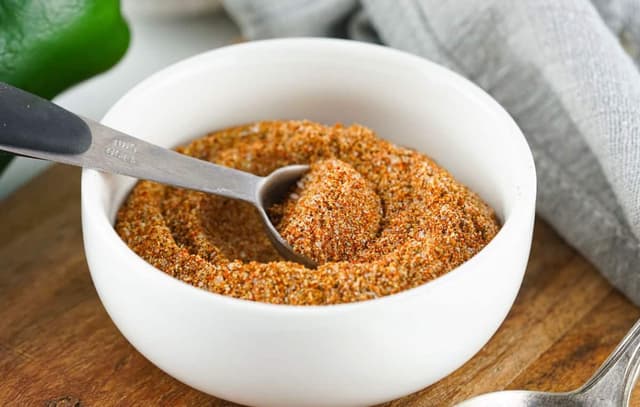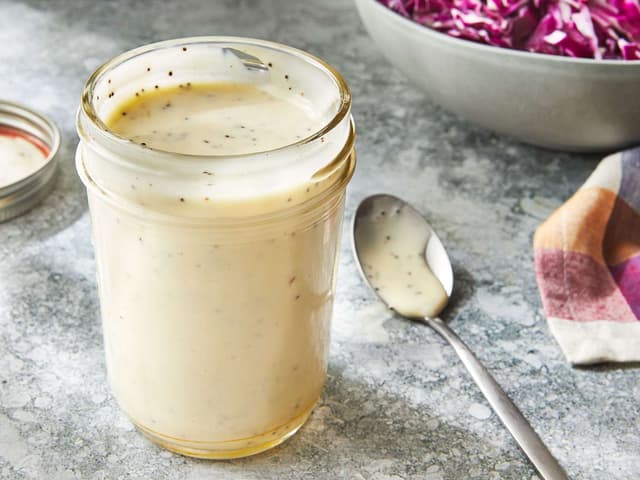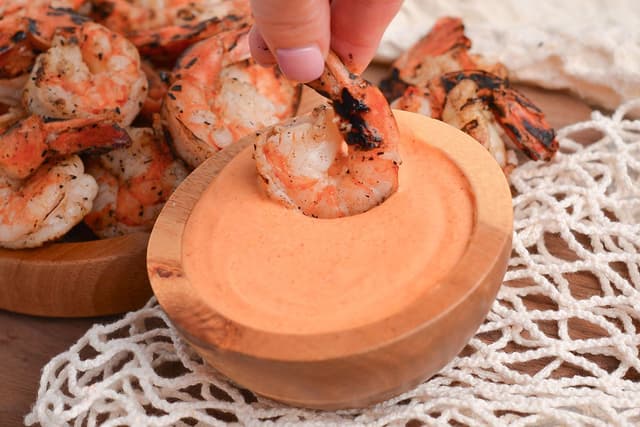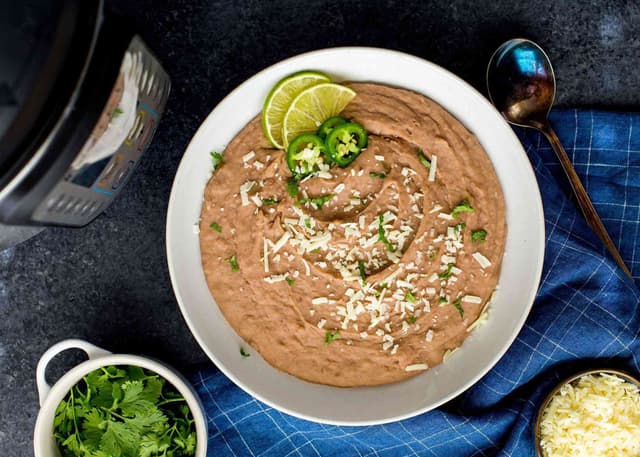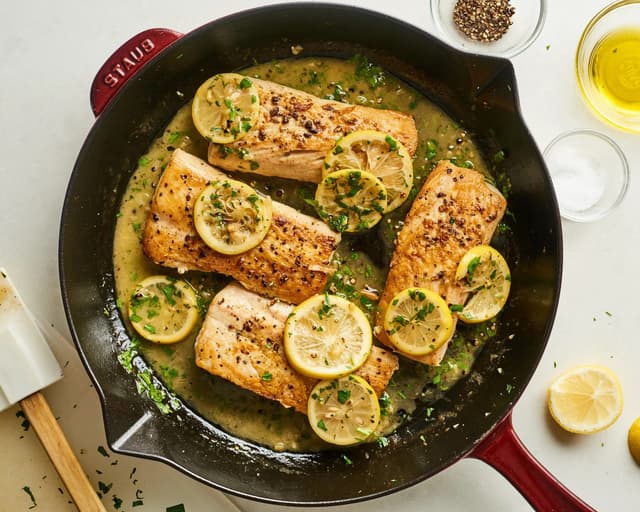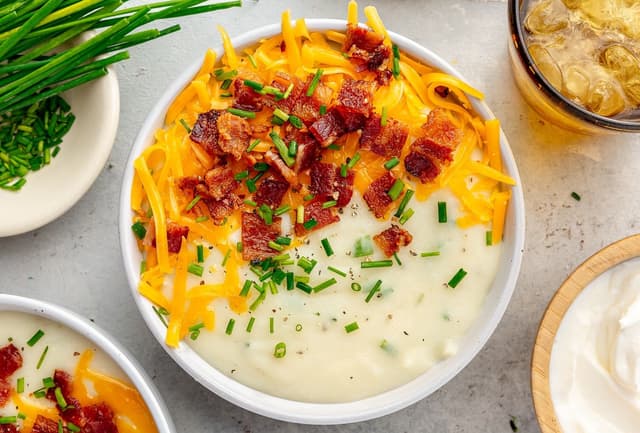Introduction
There are few meals that evoke such a powerful sense of comfort, tradition, and celebration as a classic roast beef. The rich aroma that fills the house, the communal joy of gathering around a table, and the sight of a perfectly bronzed roast are deeply woven into our culinary heritage. For centuries, this dish has been the centerpiece of family feasts and Sunday dinners, a symbol of hospitality and togetherness that turns a simple meal into a cherished memory.
While tackling a large, magnificent roast can seem daunting, this guide is designed to demystify the process and guarantee a spectacular result. By combining time-honored tradition with modern, science-backed techniques, we will walk you through creating a roast beef that is incredibly tender, bursting with flavor, and boasting a mouthwateringly crisp crust. This is more than just a recipe; it's a rewarding project that promises a truly unforgettable meal for you and your loved ones.
Why Make This Delicious Recipe & When to Serve It
Roast beef is the quintessential centerpiece for any significant celebration. It’s the star of the show at holiday dinners, from a festive Christmas feast to a special family gathering. Placing a beautifully cooked roast on the table is a statement of generosity and care, transforming any meal into a memorable event. It's the perfect choice for potlucks, milestone birthdays, or any occasion that calls for something truly impressive.
Beyond grand festivities, this recipe is an ideal project for a slow, cozy weekend. There is immense satisfaction in mastering a classic dish, and the process itself—from the patient dry brining to the final, triumphant carve—is a deeply rewarding culinary experience. The simple pleasure of a home-cooked meal of this caliber, with the added bonus of delicious leftovers for sandwiches and future meals, is a perfect way to unwind and nourish yourself.
Ultimately, preparing a roast beef is about more than just food; it’s about creating an experience. It’s a way to show love, to foster connection, and to build traditions. The shared meal reinforces family bonds and community spirit, turning the dining table into a stage for laughter and conversation, all centered around a dish that is steeped in history and heart.

Basic Ingredients (Serves 8 people)
The Star of the Show: The Beef
- 1 (4-pound) bone-in rib-eye roast (about 4 bones): Also known as Prime Rib, this cut is prized for its rich flavor, tenderness, and generous marbling. The bone adds immense flavor and acts as a natural insulator, ensuring the meat cooks evenly and stays incredibly juicy.
The Foundation of Flavor: Seasoning & Fat
- 1/4 cup olive oil: This is used to help the seasonings adhere to the roast and is crucial for conducting heat during the final searing stage, helping to create a deeply browned, flavorful crust through the Maillard reaction.
- 3 tablespoons kosher salt: The coarse, flaky texture of kosher salt is perfect for a dry brine. It draws out moisture to tenderize the meat and then allows that seasoned moisture to be reabsorbed, all while creating a dry surface for a perfect sear.
- 1 tablespoon freshly ground black pepper: Grinding whole peppercorns right before use is essential, as it releases volatile aromatic oils that provide a pungent, complex heat that beautifully cuts through the richness of the beef, a quality lost in pre-ground pepper.
The Aromatic Heart: The Gravy Base
- 1 large shallot, finely chopped: Milder and sweeter than a typical onion with a subtle hint of garlic, shallots provide a sophisticated and delicate aromatic base for the gravy, adding a layer of elegance without overpowering the beef's natural flavor.
- 4 cloves garlic, smashed: Smashing the cloves releases their essential oils and allicin, creating a pungent, savory depth that mellows into a sweet, nutty flavor during roasting. This becomes a cornerstone of the rich pan gravy.
- 3 sprigs fresh thyme & 2 sprigs fresh rosemary: These are classic, robust herbs that are sturdy enough to withstand the roasting process. They slowly infuse both the meat and the pan drippings with their woody, piney, and earthy notes, which are a traditional and perfect pairing for beef.
The Soul of the Sauce: The Liquids
- 1/2 cup dry red wine (like Malbec or Cabernet Sauvignon): This is used to deglaze the roasting pan, lifting all the flavorful browned bits (known as fond) from the bottom. The wine's acidity and tannins add immense complexity and depth to the gravy, perfectly balancing the richness of the fat.
- 4 cups low-sodium beef stock: This forms the body of the gravy, providing a rich, meaty flavor that complements the concentrated pan drippings. Using a quality stock is crucial for creating a silky and deeply savory sauce that tastes homemade, not artificial.
- 2 tablespoons all-purpose flour: This acts as the thickening agent for the gravy. By cooking it with the pan fats to create a roux, you eliminate any raw flour taste and ensure the final gravy has a classic, smooth, and velvety consistency.

Step-by-Step Preparation
- The Day Before: The Crucial Dry Brine. Pat the entire 4-pound bone-in rib-eye roast completely dry with paper towels. In a small bowl, combine the 3 tablespoons of kosher salt and 1 tablespoon of freshly ground black pepper, then rub this mixture generously over every surface of the meat. Place the seasoned roast on a wire rack set inside a rimmed baking sheet and refrigerate it, uncovered, for at least 12 and up to 24 hours to allow the salt to work its magic.
- Getting Started: Roasting Preparation. Remove the roast from the refrigerator and let it sit at room temperature for 1 to 2 hours. This crucial step takes the chill off the meat, allowing it to cook much more evenly from edge to center. Adjust an oven rack to the middle position and preheat your oven to a low 275∘F (135∘C). This low-and-slow start is the secret to the reverse-sear method, guaranteeing a perfectly tender result.
- The Slow Roast: Building Tenderness. Place the roast, bone-side down, into a sturdy roasting pan; the bones will act as a natural roasting rack. Insert a leave-in digital meat thermometer into the very thickest part of the meat, making sure the probe does not touch any bone. Roast until the internal temperature reaches 120∘F to 125∘F (49∘C to 52∘C) for a perfect medium-rare, which should take approximately 3 to 3.5 hours.
- The Rest: Locking in the Juices. Once the roast hits its target temperature, remove it from the oven and carefully transfer it to a large cutting board. Tent the roast loosely with aluminum foil and let it rest for a minimum of 20 minutes, and ideally up to 45 minutes. During this non-negotiable step, the internal temperature will continue to rise by 5-10 degrees (this is called carryover cooking), and the juices will redistribute throughout the meat, ensuring every slice is succulent.
- The Sear: Creating the Perfect Crust. About 15 minutes before you plan to serve, increase the oven temperature to its highest setting, typically 450∘F to 500∘F (230∘C to 260∘C). Rub the rested roast all over with the 1/4 cup of olive oil. Return the roast to the blistering hot oven for 10-15 minutes, just long enough to form a deep, brown, sizzling, and incredibly flavorful crust. This final high-heat blast creates the Maillard reaction without overcooking the perfectly roasted interior.
- The Gravy Begins: Building the Flavor Base. While the roast gets its final sear, place the roasting pan, with all of its precious accumulated drippings, onto the stovetop over medium heat. Add the 1 large chopped shallot and 4 smashed garlic cloves to the pan, cooking and stirring with a wooden spoon until they are softened and wonderfully fragrant, which will take about 4 to 6 minutes. Sprinkle the 2 tablespoons of all-purpose flour over the mixture and continue to cook, stirring constantly for 2 minutes to form a nutty paste known as a roux.
- Deglazing and Simmering: The Soul of the Sauce. Pour the 1/2 cup of red wine into the hot pan to deglaze it, using your spoon to scrape up all the flavorful browned bits (the fond) stuck to the bottom. Allow the wine to bubble and reduce by about half, which should take around 3 minutes. Gradually whisk in the 4 cups of beef stock, followed by the 3 sprigs of fresh thyme and 2 sprigs of fresh rosemary. Bring the gravy to a simmer and let it cook gently, allowing the flavors to meld and the sauce to thicken to your desired consistency, about 10-15 minutes.
- Finishing Touches: Carve and Serve. Remove and discard the herb sprigs from the finished gravy, then taste and season with additional salt and pepper if needed. To carve the roast, slice it away from the bones first, then cut the meat against the grain into thick, juicy slices. Arrange the slices on a platter and serve immediately, passing the hot, aromatic gravy at the table for everyone to pour over their meal.

Tips for the Perfect Recipe
- Invest in a Digital Thermometer: This is not a suggestion; it is the single most important tool for guaranteeing a perfectly cooked roast. Cooking by time is merely an estimate, but cooking to a precise internal temperature is a science. A leave-in probe thermometer that alerts you when the target temperature is reached removes all guesswork and ensures success.
- Don't Skip the Rest: This step is absolutely critical. Resting allows the muscle fibers, which have tensed up during cooking, to relax and reabsorb the flavorful juices. If you slice into a roast immediately after it comes out of the oven, those precious juices will run out onto the cutting board, leaving you with dry meat.
- Carve Against the Grain: To ensure every slice is as tender as possible, you must carve against the grain. Look closely at the meat to see the direction the muscle fibers are running, then slice perpendicular to them. This simple action shortens the fibers, making them significantly easier to chew and creating a more tender mouthfeel.
- Bone-In is Better: Choosing a bone-in roast offers several advantages. The bones act as an insulator, helping the meat cook more evenly and protecting it from drying out. They also contribute a significant amount of flavor to the meat and the pan drippings, which in turn creates a richer, more complex gravy.
- Achieve a Better Crust: The secret to an irresistibly crisp and flavorful crust lies in two key principles: a dry surface and high heat. The overnight, uncovered dry brine in the refrigerator is essential for drying out the exterior. The final, high-heat blast in the oven after the roast has rested is what triggers the Maillard reaction, creating that deeply browned, delicious finish.

Serving Ideas
The Classics are Classics for a Reason:
- Yorkshire Pudding: The quintessential partner for roast beef. These light, airy, and savory puddings have a hollow center that is the perfect vessel for soaking up every last drop of the rich, flavorful gravy.
- Roasted Potatoes: No roast dinner is complete without them. Whether you prefer fluffy Russets or creamy baby potatoes, roasting them with garlic and herbs until they are deeply golden and crispy on the outside while remaining fluffy on the inside is a must.
- Creamy Horseradish Sauce: The sharp, pungent, and sinus-clearing bite of a good horseradish sauce is the perfect counterpoint to the rich, fatty beef. This classic condiment provides a necessary contrast that cleanses the palate and enhances the flavor of the meat.
Vibrant Vegetable Sides:
- Maple-Glazed Carrots: A touch of sweetness from maple syrup enhances the natural sweetness of the carrots, offering a colorful and delicious balance to the savory notes of the roast and gravy.
- Balsamic Roasted Brussels Sprouts or Mushrooms: The deep, tangy, and complex flavor of balsamic vinegar provides a wonderful acidic element that cuts through the richness of the meal, preventing it from feeling too heavy.
- Garlic Green Beans: A simple, fresh, and vibrant side dish. Quickly sautéing fresh green beans with garlic—and perhaps some crispy pancetta or bacon for extra savory flavor—adds a welcome crunch and a splash of color to the plate.
Elevated Comfort Sides:
- Scalloped or Au Gratin Potatoes: For an even more decadent and comforting meal, a creamy, cheesy potato casserole is an undeniable showstopper. Tender slices of potato baked in a rich cheese sauce are the ultimate indulgence.
- Creamed Spinach or Kale: This velvety, rich green side dish adds a touch of classic steakhouse elegance to your dinner table. It provides another layer of creamy texture and savory flavor that pairs beautifully with the beef.

Tips for Storing and Reheating
Storing Leftovers
- Cool Down Quickly: For food safety, allow the roast beef to cool to room temperature, but do not leave it out for more than two hours. Refrigerate the leftovers promptly in airtight containers to keep them fresh and safe to eat.
- Slice or Keep Whole?: To maintain maximum moisture, it is best to store the leftover roast in large pieces or, if possible, whole. Slicing the meat just before you reheat it helps prevent it from drying out. If you do slice it, store it tightly covered with any leftover gravy to keep it moist.
- Airtight is Right: Always store the leftover beef and gravy in separate, well-sealed airtight containers in the refrigerator. When stored properly, the roast beef will remain delicious and safe to eat for up to 3 or 4 days.
Reheating Tips
- The Best Method: Low and Slow in the Oven. This is the ideal way to reheat roast beef while preserving its original texture and juiciness. Place slices of beef in a baking dish, add a splash of beef broth or leftover gravy, cover the dish tightly with foil, and warm it in a low oven (around 300∘F / 150∘C) for 15-20 minutes until just heated through.
- The Quick Method: Stovetop Simmer. For a faster option that works well for individual portions, gently reheat slices of beef in hot gravy or beef broth in a skillet over low heat. This should only take a minute or two to warm the meat through without overcooking it.
- Avoid the Microwave (If Possible): While it is the fastest method, the microwave is the least desirable option for reheating roast beef. Its intense, uneven heat can easily overcook the meat, resulting in a tough, dry, and rubbery texture. If you must use it, use a medium power setting and heat in short, 30-second intervals.
Conclusion
There is a profound and timeless satisfaction in presenting a perfectly cooked roast beef, a dish that is both a grand celebration and a comforting embrace. By marrying the rich history of this beloved classic with the precision of modern cooking techniques, you can confidently create a meal that is steeped in tradition yet flawless in its execution. We encourage you to gather your friends and family, try this recipe, and create your own delicious memories around a dish that truly brings people together.
Frequently Asked Questions
Q: What's the best cut of beef for a roast on a budget?
A: While a rib-eye is a luxurious choice, you can achieve wonderful results with more economical cuts from the hip area, such as Top Round, Eye of Round, or Sirloin Tip. These cuts are leaner, so they benefit greatly from the slow-roasting method and should be carved into very thin slices against the grain to maximize tenderness.
Q: How do I serve the roast if some guests prefer medium-well?
A: The end pieces of any roast will naturally be more cooked through than the center, so you can serve those to guests who prefer their meat less pink. Alternatively, you can briefly place a few rare slices into a pan of simmering gravy for 30-60 seconds to cook them to a perfect medium-well just before serving.
Q: Can I cook a roast from frozen?
A: Yes, it is technically possible, though it is not recommended for this specific recipe, which depends on the crucial dry-brining step for the best flavor and texture. If you are in a pinch and must cook from frozen, you will need to plan for the cooking time to be approximately 50% longer than stated and use a meat thermometer to ensure it reaches the correct internal temperature.
Q: My gravy is too thin/lumpy/bland. How do I fix it?
A: These are common issues with easy fixes. If your gravy is too thin, simply let it simmer longer to reduce and concentrate its flavor. If it's lumpy, pour it through a fine-mesh sieve for a perfectly smooth texture. If it tastes bland, it likely needs more salt and pepper, or you can add a splash of Worcestershire or soy sauce for a quick umami boost.
Works cited
- Roast Beef: A Timeless Classic and Most Popular food in England - TanPub, accessed July 1, 2025, https://www.tanpub.com/food/roast-beef-timeless-classic-and-most-popular-food-england
- Roast Beef: A Timeless Tradition of British Culinary Heritage - More Chic Life, accessed July 1, 2025, https://morechiclife.com/roast-beef-a-timeless-tradition-of-british-culinary-heritage/
- Understanding the Sunday Roast Tradition in the UK - Black Ivy, accessed July 1, 2025, https://weareblackivy.com/the-history-and-tradition-of-sunday-roasts-in-the-uk/
- History of the Sunday Roast in the UK - The Four Penny Pub, accessed July 1, 2025, https://www.4pennyhotel.co.uk/history-of-the-sunday-roast/
- Savoring Tradition: Roast Beef for Christmas Feasts, accessed July 1, 2025, https://billandbobs.com/savoring-tradition-roast-beef-for-christmas-feasts/
- When did turkey replace roast beef as the main dish for American families' Thanksgiving dinners? Why was turkey chosen over other meats? Who first served a turkey on that day? - Quora, accessed July 1, 2025, https://www.quora.com/When-did-turkey-replace-roast-beef-as-the-main-dish-for-American-families-Thanksgiving-dinners-Why-was-turkey-chosen-over-other-meats-Who-first-served-a-turkey-on-that-day
- The History of the Great British Sunday Roast - The Spruce Eats, accessed July 1, 2025, https://www.thespruceeats.com/history-of-the-british-sunday-roast-4149600
- The Story of Roast Beef - Treway Farm, accessed July 1, 2025, https://trewayfarm.co.uk/2022/09/12/the-story-of-roast-beef/
- How to Cook Bone-in Prime Rib Roast | Kansas City Steaks, accessed July 1, 2025, https://www.kansascitysteaks.com/all-about-steaks/cook-and-grill-steaks-and-roasts/how-to-cook-bone-in-prime-rib-roast
- How to Cook Bone-In Ribeye Roast | Steak University, accessed July 1, 2025, https://www.mychicagosteak.com/steak-university/cook-bone-in-ribeye-roast
- Bone-In Standing Ribeye Roast Recipe - Chef Billy Parisi, accessed July 1, 2025, https://www.billyparisi.com/bone-in-standing-ribeye-roast-recipe-with-red-wine-pan-sauce/
- Sunday Roast Beef and Gravy Recipe | Claire Robinson | Food ..., accessed July 1, 2025, https://www.foodnetwork.com/recipes/claire-robinson/sunday-roast-beef-and-gravy-recipe-1946710
- How to Sear Meats for Maximum Flavor - Allrecipes, accessed July 1, 2025, https://www.allrecipes.com/article/how-to-sear-meats/
- How to Sear Meat Properly | Whirlpool, accessed July 1, 2025, https://www.whirlpool.com/blog/kitchen/how-to-sear-meat.html
- Kosher Salt Guide by SaltWorks, accessed July 1, 2025, https://seasalt.com/salt-101/about-salt/kosher-salt-guide
- Salt Your Meat Ahead of Time, accessed July 1, 2025, https://www.saltsearsavor.com/blog/salt-meat-ahead-of-time
- Why Do We Use Kosher Sea Salt When Cooking Steak - American Criollo Beef Association, accessed July 1, 2025, https://www.leanandtenderbeef.com/Blog/Salting-Steak/
- Why Freshly Ground Pepper Tastes Better: The Science Behind It - Holar Industrial Inc., accessed July 1, 2025, https://www.holar.com.tw/blog/why-freshly-ground-pepper-tastes-better-the-science-behind-it/
- Fresh Ground Black Pepper: The Spice That Elevates Every Recipe - RecipeTeacher, accessed July 1, 2025, https://recipeteacher.com/fresh-ground-black-pepper-the-spice-that-elevates-every-recipe/
- Behind the Seasoning: Black Pepper - Uses, Benefits, Recipes - Savory Spice, accessed July 1, 2025, https://www.savoryspiceshop.com/blogs/news/behind-the-seasoning-black-pepper
- Caramelized Shallot Gravy Recipe - Vegetarian Times, accessed July 1, 2025, https://www.vegetariantimes.com/recipes/caramelized-shallot-gravy/
- what do you do with shallots?? : r/Cooking - Reddit, accessed July 1, 2025, https://www.reddit.com/r/Cooking/comments/tb6783/what_do_you_do_with_shallots/
- Company Pot Roast Recipe | Ina Garten - Food Network, accessed July 1, 2025, https://www.foodnetwork.com/recipes/ina-garten/company-pot-roast-recipe-1946134
- Pot Roast Recipe Recipe | Food Network Kitchen | Food Network, accessed July 1, 2025, https://www.foodnetwork.com/recipes/food-network-kitchen/the-best-pot-roast-7434330
- Family-Style Pot Roast Recipe | Guy Fieri - Food Network, accessed July 1, 2025, https://www.foodnetwork.com/recipes/guy-fieri/family-style-pot-roast-recipe-1924253
- Perfect Pot Roast Recipe - Serious Eats, accessed July 1, 2025, https://www.seriouseats.com/perfect-pot-roast-recipe-pioneer-woman
- What Herbs Go with Beef? Here Are Our Top 4! - Teys Australia, accessed July 1, 2025, https://au.teysgroup.com/food-info/what-herbs-go-with-beef/
- Easy Traditional Beef Gravy Recipe - The Spruce Eats, accessed July 1, 2025, https://www.thespruceeats.com/easy-traditional-beef-gravy-recipe-435754
- Pat's Roast Beef Recipe | The Neelys - Food Network, accessed July 1, 2025, https://www.foodnetwork.com/recipes/patrick-and-gina-neely/pats-roast-beef-recipe-2014339
- Cordelia's Roast Beef Recipe | Trisha Yearwood - Food Network, accessed July 1, 2025, https://www.foodnetwork.com/recipes/trisha-yearwood/cordelias-roast-beef-2260616
- Roast Beef and Pan Gravy for Beginners Recipe - Allrecipes, accessed July 1, 2025, https://www.allrecipes.com/roast-beef-and-pan-gravy-for-beginners-recipe-8404688
- Tri-Tip Beef Roast With Shallot Jus Recipe - Serious Eats, accessed July 1, 2025, https://www.seriouseats.com/tri-tip-roast-beef-recipe
- Slow-Roasted Beef Tenderloin Recipe - Serious Eats, accessed July 1, 2025, https://www.seriouseats.com/slow-roasted-beef-tenderloin-recipe
- Guide to Roast Beef for Perfect Results | Safeway, accessed July 1, 2025, https://www.safeway.ca/how-tos/entertaining-101/your-guide-to-roasting-beef/
- Roast beef questions : r/Cooking - Reddit, accessed July 1, 2025, https://www.reddit.com/r/Cooking/comments/1climid/roast_beef_questions/
- Easy, Make-Ahead Shallot Gravy Recipe - Real Simple, accessed July 1, 2025, https://www.realsimple.com/shallot-gravy-8362474
- Cooking Roast Beef? Questions Answered. | ThinkBeef, accessed July 1, 2025, https://thinkbeef.ca/cooking-roast-beef-questions-answered/
- 10 Best Side Dishes for Roast Beef - Allrecipes, accessed July 1, 2025, https://www.allrecipes.com/article/best-side-dishes-roast-beef/
- 21 Best Side Dishes To Serve with a Holiday Roast - Simply Recipes, accessed July 1, 2025, https://www.simplyrecipes.com/holiday-side-dish-recipes-8722210
- 45 Savory Side Dishes For Pot Roast - Southern Living, accessed July 1, 2025, https://www.southernliving.com/what-to-serve-with-pot-roast-8678118
- 40 Sides to Serve with Pot Roast - Taste of Home, accessed July 1, 2025, https://www.tasteofhome.com/collection/pot-roast-sides/
- www.quora.com, accessed July 1, 2025, https://www.quora.com/Is-it-safe-to-refrigerate-and-reheat-leftover-roast-beef-if-some-of-the-juices-have-dried-up-on-top-of-the-meat#:~:text=After%20dinner%20it%20must%20then,be%20kept%20above%20140%20F.
- The Absolute Best Way To Reheat Roast Beef Without Losing Tenderness - Food Republic, accessed July 1, 2025, https://www.foodrepublic.com/1329482/reheat-roast-beef/
- Newest 'roast-beef' Questions - Seasoned Advice, accessed July 1, 2025, https://cooking.stackexchange.com/questions/tagged/roast-beef
- How to Reheat a Roast Dinner - The Best Way! - Cooking with Bry, accessed July 1, 2025, https://cookingwithbry.com/how-to-reheat-a-roast-dinner/
- Cooking Questions: Beef - Allrecipes, accessed July 1, 2025, https://www.allrecipes.com/article/cooking-questions-beef/
- How to reheat roast beef? - HotBot, accessed July 1, 2025, https://www.hotbot.com/answers/how-to-reheat-roast-beef
- Tips for re-heating leftover medium rare roast beef? : r/Cooking - Reddit, accessed July 1, 2025, https://www.reddit.com/r/Cooking/comments/3jg5ib/tips_for_reheating_leftover_medium_rare_roast_beef/
- A Guide to Beef Roasts and the Best Ways to Cook Them - The Spruce Eats, accessed July 1, 2025, https://www.thespruceeats.com/guide-to-beef-roasts-2313275
